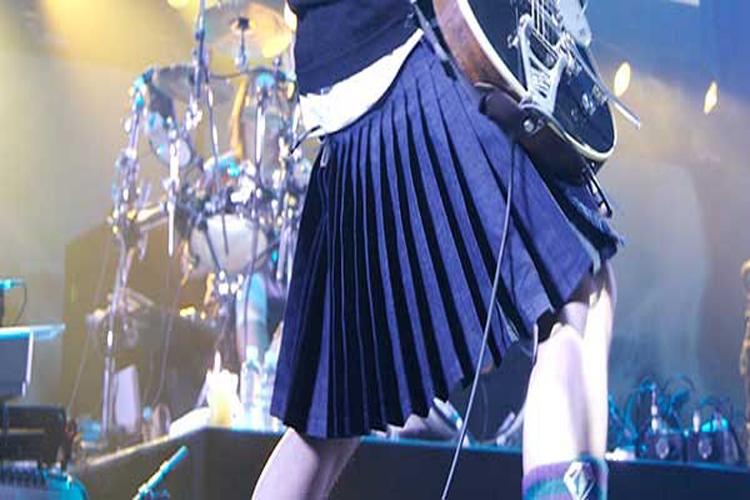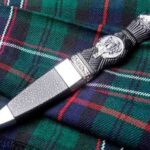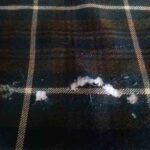The first choice for anyone who is considering a kilt is what or which of the two main styles of the kilt to select traditional or casual. We’ll discuss what differentiates casual kilts or a five-yard kilt from its bigger brother, which is the classic eight-yard kilt. If you’d like yours to be credit-worthy for many years to come, we’ll tell you the things to keep an eye for when selecting a kilt and what you should be sure to avoid!
Let’s first define what a casual kilt is. Kilts for men are all lower-body wraps. They’re distinguished by deep pleating towards in the back, and flat an apron to the front that drops down to the knee. The more casual five-yard kilt differs from the more traditional eight-yard kilt in two primary ways. It is first, it sits lower in the waist and is typically in the same place as trousers, whereas traditional kilts sit higher on the midriff. It also uses less material, which makes it more comfortable to wear and less expensive to buy, although there are disadvantages to the same way. In all other respects, a casual kilt must be made exactly the same as the standard 8-yard kilt. However, it is not always the case! Be sure to read the article before you decide.
The occasions to dress casually – or not?
The clue lies within the title. The casual style of the kilt is most appropriate for informal events. In essence, you can dress casually on top of pants (or pants for our American colleagues) in all other but formal events. Further details on that are below.
The casual kilt can be described as an informal dress. It’s ideal for everyday wear or for gatherings such as sports games. It was during football games and crowds at rugby games that the revival of the kilt in recent years as an icon of popular culture actually started. It’s now an integral part of every major sporting event.
Other scenarios where the casual kilt is for are sports like golf or hiking. Actually, some were known as Sports Kilts and thought that the name was no longer used. This is also true for sports such as hillwalking. We’ve also heard the term “hillwalking kilts” as a term. It’s possible that you’ll be pleased to carry less bulk towards the close of the day particularly if it rains.
The lightweight 5-yard casual kilt is perfect for dancing at the ceilidh or for clubbing. Be aware that the decrease in a fabric will result in little of the motion that makes an illustrious kilt attractive. It’s not necessarily a problem. You’ll never find casual kilts that will “birl” out the way the full monty style dancers do. This is one of the main factors to consider when choosing which one of two kilt styles is best for you.
The only time that you should think twice about wearing a casual kilt would be major events such as weddings, and then only formal occasions. It’s unlikely to be Royalty wearing casual kilts. We’d be happy to dress in one for a very elegant evening out. We’ve included some notes for tips on how to style.
The waistline of a casual kilt
One of the main ways that a casual kilt can differ from the traditional 8-yard kilt is the waistline. The standard kilt typically sits in the middle of the waist that extends well over the man’s stomach. The casual kilt, by contrast, is cut so that it sits just below the waistline of normal trousers.
The lower waist is another tiny difference in its design. This is because the informal kilt generally has two straps of leather to keep it in place, whereas the traditional kilt usually comes with three straps.
The perfect casual kilt for you – what do you pair it with?
In some ways, the five-yard kilt’s slimmer waistline allows it to be worn more casually. The casual style helps to match the casual kilt to regular clothes of any kind including sweaters, shirts, vests, waistcoats, t-shirts and big boots, trainers or sneakers, or anything else you are drawn to. It’s almost impossible to find anything that looks good.
This allows the casual kilt for a wider selection of options for styling. It’s essentially clothing for the fashion-conscious, so you can dress your casual kilt in your individual style. There’s no guarantee that you’ll be wearing it with the typical accessories such as sporrans or kilt pints which are usually associated with traditional kilts. However, you are able to wear it choose to wear it if you’d like. A casual kilt can be more like a pair of trousers to the degree that it can be worn with anything.
Maybe you’ll be shocked to find out that a five-yard kilt is able to be able to pass any inspection, even for formal events. When worn with an Argyll jacket and vest, or Tweed Daywear jacket and vest for instance it’s unlikely for anyone to notice the waistline’s lower part. With a solid material, it’s not going to suggest to indicate that you’re not wearing a traditional kilt. Avoid the official Prince Charlie jacket, as it’s made to be a bit higher in the waist, so it won’t appear quite right.
The length of the fabric and pleating make for an informal kilt
A casual kilt pleated at rear
Another term used to describe the casual kilt is five-yard Kilt. This is the length of fabric required to create it correctly. 5 yards (or 4.6 meters) is the length of the single width’ loom, which is half from a conventional double width weaving loom, i.e. 2.5 miles (or 2.3 meters. This is the length that is required for pleating that is acceptable to the rear.
Be careful out there in the wilds of the market. The poor quality sellers cut the fabric to be used up to four yards. In the worst case, there are some that cut it down to three yards in order to reduce the cost. This leaves very little fabric to pleat which is the core of the kilt’s style. Therefore, these are nothing higher than skirts worn by girls.
On the other side of the scale, we’ve also seen vendors who are less well-known, promoting what they refer to as “eight-yard casual kilts”. According to us, they’re marketing to those who have heard that the eight-yard kilt was “correct”. However, it’s usually made of low-cost fabric and lacks the waistline high of a genuine eight-yard kilt. Therefore, they could earn more money by investing less in fabrics and expert tailoring. With a hint to reflect and smoke,, it’s an “eight-yard casual kilt’, like if it’s something that exists. Bargepoles are a thought.
Knits and casual fabrics
A casual kilt that is well-made and tailored can be just as good or even better than traditional kilts for various reasons. They can even be difficult to differentiate, but if constructed from high-quality materials.
Of course, not all kilts have the same quality. To put it simply it is true that not all kilt sellers are equally reliable. Perhaps more specifically it’s the case that there’s a huge amount of cheap import “tartan tat” sold both on Scottish high streets as well as through the Internet. Unfortunately, the sellers do not know or even care about the history of Scotland. A lot of their clothes should not even be called Kilts. They’re more like cheap ladies’ skirts that are sold to tourists who don’t know more. And some of them are hazardous. Check it out.
The right fabric for casual Kilts
For a classic eight-yard Kilt, we would suggest a strong heavyweight tartan to ensure authenticity, or perhaps a lightweight for comfort. A few customers prefer lightweight fabrics to give a little more warmth in warmer regions. However, if it’s possible, we’d recommend that heavier weights add significantly to a kilt’s stunning quality.
The casual kilt isn’t any different. If you’re looking good, then the heavier tartans always create the most impressive impression. In reality, based on the style you’re wearing them with, an appropriate casual kilt could be difficult to differentiate from the traditional kilt.
There’s a need for lighter fabrics when you’re likely to wear it when weight is a factor like for informal dancing or hill walks for instance. It’s not a coincidence that a lot of athletes in Highland Games competitions or Strongest Man contests opt for an informal kilt over in a situation where every bit of effort is valued.
Great fabrics for casual Kilts
black wool casual Kilt
There are three primary kinds of materials that a quality casual kilt could be constructed using, depending on the use. From a broad perspective, the most effective material as that used to make a traditional kilt, which is Pure new wool. Comfortable, warm, sturdy, and tough, it’s great to touch, hangs beautifully, and boasts great pleating qualities there is nothing better for a kilt than wool. With tens of thousands of wool tartan fabrics available to pick from, not forgetting hundreds of tweeds in all shades and patterns plain colored fabrics in any shade and many more patterns you’ll be spoiled for choices. Don’t go any further than wool, unless you have any of these reasons mentioned below.
The other material you can think of as a wool substitute is polyviscose. It is crucial to remember that you’re doing this for a valid reason! Read on for more details, as it will be discussed in the next section. The best reasons to go with poly-viscose are that it’s a hypoallergenic alternative for those who are sensitive to wool or if you’re vegan or have ethical concerns about animals and their products. I’d be reluctant to even mention it’s being more expensive than wool as an adequate motive, like all other things all things being equal, I’d encourage anyone to pay a bit longer to get the best which will provide enjoyment for the rest of your life.
The 3rd kind of material that is perfect for the job is specially designed materials for alternative Kilts. This includes cotton, if your kilt is an outfit for fashion, as it opens up a variety of options, such as camouflage kilts or denim Kilts. On the other hand, at the opposite side of the spectrum, you can choose premium genuine leather, which is able to make a stunning outfit like the leather Kilt.
Avoid using certain materials for informal Kilts
The first fabric we will be mentioned in this article is also polyviscose when it is used in the wrong way! The tartan fabric that retailers sell is polyviscose since it appears to resemble wool at a distance but it’s much more affordable. This allows them to make “kilt-like” garments in remote overseas factories. They sell these travesties mainly to tourist souvenir shops and foreign customers with no having access to more information. In short, it’s not as good or as beautiful as wool. If that’s the type of wool you’re being told is the most popular option, consider it as a warning flag.
There’s an array of different fabrics that many of the outlets that pretend to be Kilts, such as viscose, polycottons, and cotton tartans. They’re all, frankly, rubbish. Don’t let a low ticket cost lure you to make a purchase that you’ll regret.
In extreme cases, the products copied from other brands could be life-threatening. We’ve seen video footage of what happens when you wander near a flame. The clothing (and consequently its wearer) got sucked up by the plastic-fueled flames in a matter of seconds. This is not something that happens to wool as it naturally is flame-resistant. Purchase one for yourself at the risk of your life.
Do not buy any kilt off the shelf.
To be able to fit properly the kilt should always be designed to fit. Without it, the important measurements are always a compromise. Therefore, it will not sit comfortably with your figure. Also, it will look it’s a little unkempt.
There are many reasons that authentic kiltmakers online need four precise measurements. This is because every kilt, whether casual or traditional is a tailored piece of clothing. It must be shaped to your hips and waist and be just the right length to your knee. For the pleats and pattern to look good there’s only a small space for adjustment. It is important to know your height to ensure that you are sane. This will help avoid making mistakes when ordering on the internet.
However, tartan tat stockists cannot afford to stock around 1000 sizes of combinations in a range of tartans. Therefore, they attempt to simplify the process like you would choose trousers. But, in the end, you’ll wear something that’s snug here or too loose elsewhere. It’s going to look wrong.
This is a crucial aspect to consider when deciding where to purchase. There’s no doubt that no authentic kiltmaker will ever offer kilts off the shelf. Therefore, any seller who will try to convince you to purchase a kilt that is available in sizes is only concerned with profit – even at cost to you. Even if they say they can make custom Kilts too, think about why you should be able to trust them?
Other styles of kilts
There will be those who disagree with our interpretation of casual kilt. There are self-proclaimed experts who claim that nearly any lower body garment that is not bifurcated on a man could be considered a casual Kilt. For us, this is absurd. The term is so broad that it is nearly meaningless.
There are now all kinds of spin-off clothes that resemble the kilt in one way or the other. If these aren’t pleated or have no pleating, or if the hem is just beyond the knee, it should not be considered a kilt all since it negates the primary characteristics of the garment. However, it is possible to include pockets, loops, or additional bells and whistles, while still keeping the kilt’s fundamental characteristic. These unconventional styles can be classified under the banner of modern kilts to highlight their fashionable inclinations. The main question to ask yourself is whether you’ll still adore the style in a few years, or fall victim to fashion trends?
It’s also an extreme form of casual kilt that requires expertise and skill to wear, if seeking something that is truly unique, let’s look at this style: the Great Kilt or Feileadh Mor. Many claim it’s the authentic kilt and every other style is new innovations. There is some truth to this when you consider that anything just hundreds of years old is considered to be modern. The word “plaid” refers to a blanket, and historically, the kilt was believed to be just an inch of cloth tied around the body for warmth and comfort. In a subsequent article, we’ll the subject more thoroughly.
Casual Kilt Casusal Kilt Guide
Last modified: February 1, 2022




